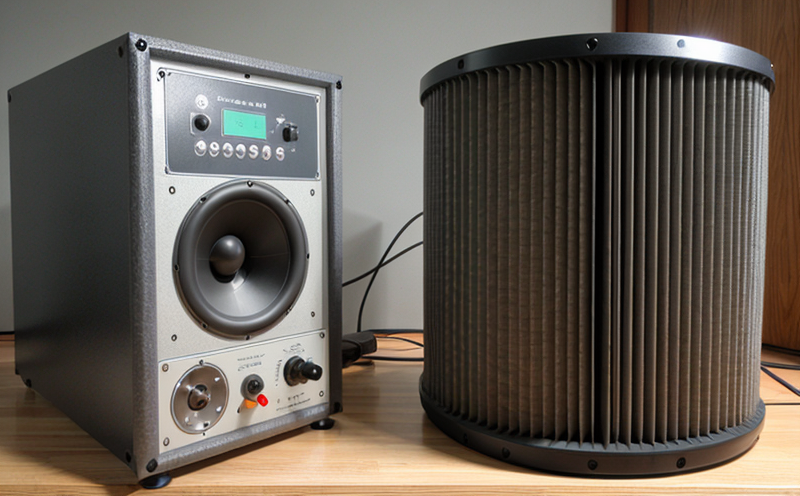ISO 20283-5 Vibration Testing of Deck Machinery
The ISO 20283 series addresses the testing and performance requirements for machinery aboard ships. Specifically, ISO 20283-5:2019 provides guidelines on vibration tests for deck machinery installed in naval architecture environments. This service is critical for ensuring that deck machinery operates within acceptable limits to maintain ship safety, crew comfort, and operational efficiency.
The test procedure outlined in ISO 20283-5 aims to assess the structural integrity and mechanical performance of deck machinery under simulated operating conditions. The vibration tests are designed to expose potential weaknesses or flaws before deployment, ensuring that all equipment meets stringent international standards for maritime safety.
Deck machinery encompasses a wide range of components, including but not limited to: winches, capstans, derricks, and other lifting devices used on the ship's deck. These machines are subject to constant stress from heavy loads, environmental factors like saltwater exposure, and varying operating conditions at sea.
The vibration testing process involves attaching accelerometers or other appropriate sensors to critical parts of the machinery under test (MUT). The MUT is then subjected to controlled mechanical stimulation that simulates real-world operational scenarios. This allows us to measure the vibratory response across various frequency bands, providing insights into how well the machinery can withstand expected stresses.
Once testing is complete, our team analyzes the collected data using advanced signal processing techniques and compares it against specified acceptance criteria defined by ISO 20283-5. Any deviations from these standards indicate areas where improvements could be made to enhance reliability or reduce maintenance costs over time.
A key aspect of this service lies in its ability to provide actionable insights that help improve both the design and manufacturing processes for future products. By identifying potential issues early on, shipyards can implement corrective measures during development stages rather than addressing them post-installation, which reduces overall project timelines and associated expenses.
Our approach ensures compliance with international regulations while also enhancing product quality through rigorous testing protocols tailored specifically to the unique challenges faced by marine equipment manufacturers. With our expertise in this field, we offer clients peace of mind knowing their products will meet all necessary requirements before they reach end users.
To summarize, ISO 20283-5 vibration testing plays a vital role in safeguarding both personnel and vessel integrity by identifying any latent defects early on during the product lifecycle. This proactive approach not only enhances safety but also contributes positively towards reducing long-term operational costs associated with unscheduled repairs or replacements.
Scope and Methodology
The scope of ISO 20283-5 vibration testing includes evaluating the performance characteristics of deck machinery under specified test conditions. The methodology involves several key steps:
- Equipment Setup: Preparing the MUT for testing by attaching sensors such as accelerometers strategically placed on key components.
- Vibration Excitation: Applying controlled mechanical stimuli to mimic actual operational loads and environmental factors.
- Data Collection: Recording vibratory responses using high-precision instruments during various stages of excitation.
- Analysis: Processing recorded data through advanced analytical tools to determine compliance with defined acceptance criteria.
The entire process is meticulously documented, ensuring transparency and reproducibility for future reference or review. Compliance officers responsible for regulatory adherence will find this level of detail invaluable when preparing documentation required by industry bodies like the International Maritime Organization (IMO).
Quality and Reliability Assurance
At our laboratory, we adhere to strict quality control measures throughout every phase of the testing process. From initial consultation with clients regarding their specific needs up until final report generation, each step is carefully managed by experienced professionals who understand the nuances involved in marine equipment testing.
We employ state-of-the-art facilities equipped with cutting-edge technology capable of performing precise measurements down to nanometer scales where necessary. Our team members undergo continuous training and certifications relevant to current best practices within the field so they can stay updated on evolving standards such as those issued by ISO or ASTM.
Our commitment extends beyond just meeting minimum compliance levels; we strive to exceed expectations whenever possible. By incorporating additional checks and balances into our workflows, we ensure that all results presented are accurate representations of reality rather than mere approximations.
Competitive Advantage and Market Impact
By offering comprehensive ISO 20283-5 vibration testing services, our clients gain a significant competitive edge in the global market. Here are some ways this service translates into tangible benefits:
- Enhanced Product Reputation: Demonstrating adherence to internationally recognized standards helps establish trust with customers and stakeholders alike.
- Increased Market Share: Superior quality products attract more buyers, leading to higher sales figures over time.
- Better Customer Relationships: Providing reliable data backed by robust testing procedures fosters stronger relationships based on mutual respect and shared goals.
- Cost Efficiency: Early identification of problems via pre-production testing saves money compared to discovering issues later in the lifecycle when they become much more expensive to fix.
In addition, our services help companies maintain their certifications, ensuring ongoing compliance with relevant regulations. This is particularly important for those operating in highly regulated industries like maritime transportation where safety and environmental considerations are paramount.





